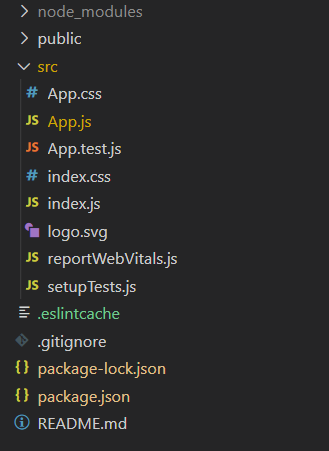Dynamic Key Names in React setState()
Learn how to effectively update dynamic keys in your React component's state using setState() and ensure efficient UI rendering.
Learn how to effectively update dynamic keys in your React component's state using setState() and ensure efficient UI rendering.
In React, you might encounter situations where you need to update the state object using dynamic key names. This commonly arises when dealing with forms or lists where the number of elements can change. Let's explore how to achieve this using computed property names within the setState method.
In React, updating the state with a dynamic key name involves using computed property names within the setState method. This allows you to use variables or expressions to determine the key you want to update. Here's a breakdown:
Understanding the Problem
Imagine you have a form with multiple input fields. You want to update your component's state based on which input field the user is interacting with. Instead of writing separate setState calls for each field, you can use a dynamic key to target the specific state property.
The Solution: Computed Property Names
JavaScript's computed property names allow you to use expressions within square brackets [] to define object keys. This is the key to dynamically setting state in React.
Example
import React, { useState } from 'react';
function MyComponent() {
const [formData, setFormData] = useState({});
const handleChange = (event) => {
const { name, value } = event.target;
// Dynamically update the state using computed property name
setFormData({
...formData, // Spread existing state
[name]: value // Update the key matching the input's 'name' attribute
});
};
return (
<form>
<input type="text" name="firstName" onChange={handleChange} />
<input type="text" name="lastName" onChange={handleChange} />
</form>
);
}
export default MyComponent;Explanation
formData to store the form data.handleChange Function: This function is triggered whenever an input field changes.name and value from the input field that triggered the event using event.target.setState:
...formData) to copy the existing state into the new object.[name]: value. This uses a computed property name where the value of the name variable (from the input field) becomes the key in the state object. The corresponding input's value is assigned to this key.Key Points
name attributes that match the keys you want to use in your state.This approach provides a clean and efficient way to manage state updates from multiple input fields or any scenario where you need to update state keys dynamically.
This React code demonstrates how to create a dynamic form where the state is updated in real-time as the user types. It uses the 'useState' hook to manage the form data as an object. The 'handleChange' function dynamically updates the state object using the input field's 'name' attribute as the key. The 'handleSubmit' function showcases that the state is correctly updated with the form data. The code provides a basic example of handling dynamic form input in React.
import React, { useState } from 'react';
function DynamicFormState() {
// Initialize state with an empty object
const [formData, setFormData] = useState({});
// Function to handle input changes
const handleChange = (event) => {
const { name, value } = event.target;
// Update state dynamically using computed property name
setFormData(prevState => ({
...prevState, // Spread previous state to keep existing data
[name]: value // Update the key matching the input's 'name' attribute
}));
};
// Function to handle form submission (for demonstration)
const handleSubmit = (event) => {
event.preventDefault();
alert("Form Data Submitted: " + JSON.stringify(formData));
};
return (
<div>
<h2>Dynamic Form State in React</h2>
<form onSubmit={handleSubmit}>
<div>
<label htmlFor="firstName">First Name:</label>
<input
type="text"
id="firstName"
name="firstName" // 'name' attribute is crucial
onChange={handleChange}
/>
</div>
<div>
<label htmlFor="lastName">Last Name:</label>
<input
type="text"
id="lastName"
name="lastName" // 'name' attribute matches state key
onChange={handleChange}
/>
</div>
<button type="submit">Submit</button>
</form>
{/* Display the current state */}
<h3>Current State:</h3>
<pre>{JSON.stringify(formData, null, 2)}</pre>
</div>
);
}
export default DynamicFormState;Explanation:
useState({}) creates a state variable formData initialized as an empty object.name attribute (e.g., name="firstName") that directly corresponds to the key you want to update in the state.handleChange Function:
name and value from the input field that triggered the change event.setFormData and a callback function....prevState) to copy the existing state and then dynamically update the key matching the input's name with the new value.handleSubmit function is there to demonstrate that the formData state is being updated correctly. It will alert the form data when the form is submitted.How it Works:
onChange event triggers the handleChange function.handleChange function dynamically updates the state using the input's name as the key and the input's value as the value in the formData object.This example clearly demonstrates how to use computed property names within setState to manage dynamic form data efficiently in React.
Alternatives to Computed Property Names: While computed property names are the standard and most readable way to update state with dynamic keys, you can also achieve this using template literals within object keys (e.g., {[input-${index}]: value}). However, this approach might be less readable in some cases.
Handling Arrays in State: When working with arrays in state and you need to update an item at a specific index dynamically, you can use a similar approach. You can create a copy of the array, update the element at the desired index using the dynamic value, and then update the state with the new array.
Performance Considerations: While spreading state (...prevState) is generally performant, for very large state objects or frequent updates, consider using libraries like Immer or useReducer hook, which can optimize state updates and improve performance.
TypeScript Integration: If you're using TypeScript, you'll need to define the type of your state object to ensure type safety when updating state with dynamic keys. You can use index signatures in TypeScript to define the types of keys and values allowed in your state object.
Practical Use Cases: Dynamic state updates are essential for building dynamic and interactive forms, handling lists of items where the number of items can change, managing data from API responses with dynamic keys, and more.
Debugging: When debugging issues related to dynamic state updates, carefully inspect the name attributes of your input fields and ensure they match the keys you're using in your setState calls. Use console logs or React Developer Tools to examine the state object and track how it changes with each update.
This article explains how to update React component state with dynamic key names using computed property names.
| Problem | Solution |
|---|---|
Updating state for multiple input fields without writing separate setState calls for each. |
Use computed property names within the setState method. |
How it Works:
handleChange Function: This function is triggered on input field changes.name and value from the changed input field.setState:
...) to copy the existing state.[name]: value to dynamically set the state key using the input field's name attribute and its corresponding value.Example:
setFormData({
...formData,
[name]: value
});Key Points:
name attributes matching the desired state keys.This approach offers a clean and efficient way to manage state updates from multiple input fields or any scenario requiring dynamic state key updates.
Dynamic state updates are crucial for building interactive and data-driven React applications. By leveraging computed property names within the setState method, you can efficiently update specific state properties based on dynamic values, such as user input or data fetched from an API. This approach simplifies state management, improves code readability, and makes your components more flexible and reusable. Remember to use the spread syntax to preserve immutability when updating state objects and consider performance implications for large state objects or frequent updates. By mastering dynamic state updates, you'll be well-equipped to handle a wide range of scenarios in your React projects.
 How to set state with a dynamic key name in ReactJS ... | A Computer Science portal for geeks. It contains well written, well thought and well explained computer science and programming articles, quizzes and practice/competitive programming/company interview Questions.
How to set state with a dynamic key name in ReactJS ... | A Computer Science portal for geeks. It contains well written, well thought and well explained computer science and programming articles, quizzes and practice/competitive programming/company interview Questions.![Understanding this.setState({ [name]: value}) | by Bret Doucette ...](/placeholder.png) Understanding this.setState({ [name]: value}) | by Bret Doucette ... | What is going on here?
Understanding this.setState({ [name]: value}) | by Bret Doucette ... | What is going on here? Atlaskit Dynamic Table component not sorting as expected ... | Either the documentation is a little under cooked or there may be a defect in the dynamic-table component as i have plain-text columns which do not sort by Asc or Desc like one would expect to happen. When I compare the underlying structure of my heading and rows, I’m not seeing anything obviously different, content is a string for the Name, Key and Project Type columns. In another table it doesn’t even attempt to sort, at least this one is doing that but the sorting is a little odd. The doc...
Atlaskit Dynamic Table component not sorting as expected ... | Either the documentation is a little under cooked or there may be a defect in the dynamic-table component as i have plain-text columns which do not sort by Asc or Desc like one would expect to happen. When I compare the underlying structure of my heading and rows, I’m not seeing anything obviously different, content is a string for the Name, Key and Project Type columns. In another table it doesn’t even attempt to sort, at least this one is doing that but the sorting is a little odd. The doc... How to set state with dynamic key-value pair in React – Coding Wiki | May 15, 2022 ... With a dynamic key-value array you can save all form values without needing to create a separate variable for each form element.
How to set state with dynamic key-value pair in React – Coding Wiki | May 15, 2022 ... With a dynamic key-value array you can save all form values without needing to create a separate variable for each form element.